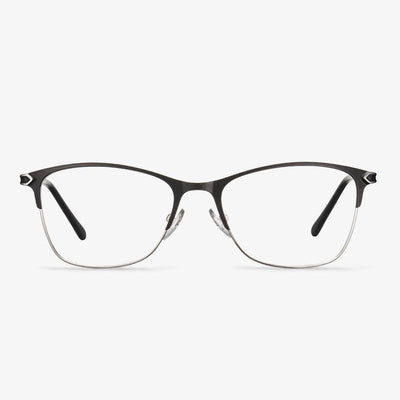Features of acetate frames
These are several powerful attributes of acetate frames, indicating that this material is very unique. The high-quality acetate frame is known for its lightweight, fastness, and thin structure.
- No harm to the environment.
- Made of renewable materials.
- Hypoallergenic.
- Available in various colors.
- Can make exquisite designs.
- Can be adjusted by an optician.
About Glasses Donation
Some enterprises adhere to the quality of survival. They always adhere to the credibility and development of the business philosophy, investing in public welfare undertakings and fulfill their social responsibilities. They donate glasses, have free vision tests, and put forward reasonable love eye care advice according to the results of the test to the public.
Should you choose titanium or pure titanium frames?
In reality, there is no absolute good or bad, if it is comfortable to wear, suitable for personal preference. They are good glasses for a single person, because if someone else wears the right and good-looking glasses, you may not wear the right and good-looking glasses yourself. Therefore, it is still a specific problem, with specific analysis, suitable for their own is good.
What Are Adjustable Glasses?
Are you over age 40 and unhappy with your current glasses for the presbyopia correction? Most people with nearsightedness, farsightedness, or astigmatism need progressive lenses to see objects clearly. But some are frustrated by the relatively limited field of view these and other multifocal lenses provide for intermediate and near vision.
And, those people with presbyopia also have problems. They often are frustrated by forgetting to bring their reading glasses or are constantly needing to put them on and take them off to see clearly at a different distance.
If you also have the same trouble, here is some good news. You can use multifocal eyeglasses to solve these problems and give you clear, unobstructed vision at any distance with just a simple turn of a dial inside the eyeglasses frame.
And these glasses are called adjustable glasses or adjustable focus glasses. They are a versatile and affordable solution to correcting minor vision problems. They compensate for presbyopia and other refractive errors like farsightedness and nearsightedness. They are non-prescription glasses designed for everyday use.
You can see the top to look far away and look down to see near objects clearly because different portions of lenses offer different types of correction. With adjustable glasses, you have one focal length that varies depending on where you are looking.
Anyone can wear adjustable glasses, but they are especially beneficial for people who cannot afford regular glasses or for those who live in areas where regular glasses are not accessible.
Disadvantages of glasses
They can distort vision, especially at the edges of lenses if you have strong prescriptions or astigmatism. Some people have trouble adjusting to progressive lenses. These lenses fog up and splash in the rain. Due to the limitation of the frame itself and the effect of the prism effect in the peripheral part of the glasses, the wearer can see a relatively narrow field of vision.
The characteristics of metal material
The material of metal glasses frame chooses some kind of metal material or alloy to make mostly. Most of the copper alloys are treated as the base material and then have surface treatment processing. Then there is the recent rise of pure titanium frames and those made of memory alloy. Metal frames are usually equipped with nose pads, which are movable to accommodate a variety of nasal shapes. The end of the temple is often covered with a plastic cover, not only beautiful but also to protect the temple and skin.
Is blue light blocking worth it?
There are two main problems with anti-blue glasses currently on the market. One is that the place to be prevented is not preventable, and the other is that people have color casts due to wrong protection and aggravate visual fatigue. Studies have shown that our eyes are the most intolerant of blue light in the 400-440 nanometer band. Therefore, current manufacturers mainly block blue light in this band when producing anti-blue glasses. However, the blue waveband of electronic products is between 450 nanometers and 490 nanometers, so most anti-blue glasses have little protection in this waveband. In addition, the blocking rate of anti-blue glasses is 20%~30% to achieve a good anti-blue light effect, but now the blocking rate of anti-blue glasses on the market has basically reached 80%~90%. All in all, these blocking blue light glasses cannot prevent the blue light in the 450-490 nanometer band, and their high blocking rate will also cause a color shift, which makes people more likely to have eye fatigue and headache.
In daily life, the intensity of blue light is low, not enough to cause damage to the fundus, so ordinary people do not need to wear anti-blue glasses unless they are working in extremely strong light conditions or working in special environments. To protect the eyes, it is more important for people to develop good eye habits. For example, wear a pair of suitable glasses and read insufficient light and at an appropriate distance. Avoid using electronic products for a long time. Take a break for 20 to 30 seconds every 20 to 30 minutes, and look at the distance regularly. If you have dry eyes while reading the electronic screen, remember to blink to 12 times per minute. It is best to wear sunglasses when outdoors.











































